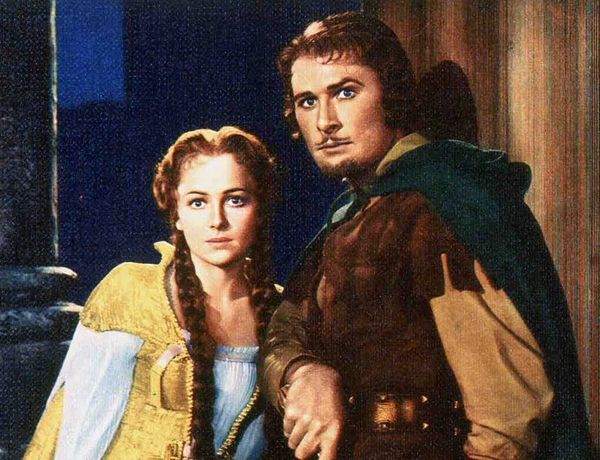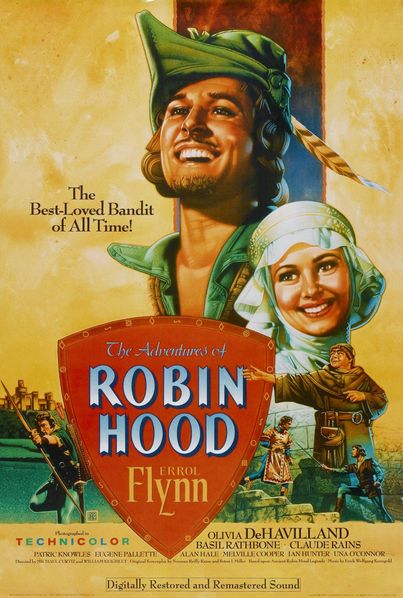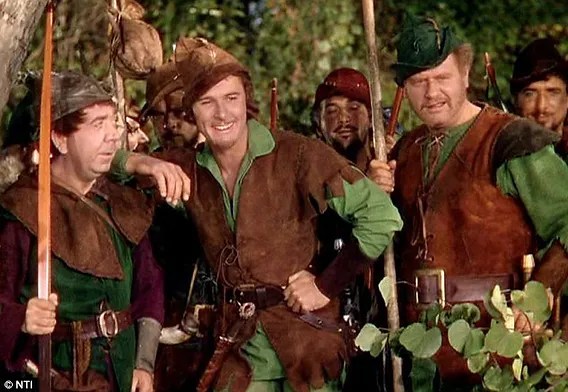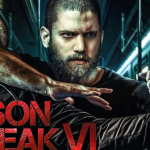The Adventures of Robin Hood (1938)

“The Adventures of Robin Hood” (1938): A Timeless Classic Directed by Michael Curtiz and William Keighley
Released in 1938, “The Adventures of Robin Hood” is a vibrant and swashbuckling adventure film directed by Michael Curtiz and William Keighley. This cinematic gem stars Errol Flynn as the legendary outlaw Robin Hood, along with Olivia de Havilland as Maid Marian and Basil Rathbone as the formidable Sir Guy of Gisbourne. Known for its lush Technicolor cinematography and charismatic performances, this film has become a quintessential representation of the Robin Hood legend, captivating audiences for generations.

The narrative follows the legendary figure of Robin Hood, who famously robs from the rich to give to the poor in medieval England. Set against the backdrop of King Richard the Lionheart’s absence during the Crusades, the film introduces Robin as a nobleman who becomes an outlaw after the corrupt Prince John (Claude Rains) seizes control of the kingdom. Robin’s band of Merry Men, including the loyal Little John (Alan Hale) and the clever Friar Tuck (Eugene Pallette), join him in his quest to restore justice to the oppressed people of Nottingham. Central to the story is Robin’s romance with Maid Marian, who is caught in the political turmoil of the time, adding a layer of emotional depth to the adventure.

The direction by Curtiz and Keighley is characterized by a blend of action, romance, and humor, creating a film that appeals to a wide audience. The cinematography, helmed by the talented James Wong Howe, showcases the stunning landscapes and vibrant costumes, immersing viewers in the colorful world of medieval England. The film’s pacing is brisk, with thrilling sword fights, archery contests, and elaborate chase scenes that keep audiences on the edge of their seats. The iconic score by Erich Wolfgang Korngold enhances the film’s adventurous spirit, further solidifying its status as a classic.

“The Adventures of Robin Hood” is primarily classified as an adventure film, but it also incorporates elements of romance, comedy, and action. The film explores themes of heroism, justice, and loyalty, emphasizing the importance of standing up against tyranny and fighting for the downtrodden. Through Robin Hood’s interactions with both friends and foes, the narrative conveys a message about the power of camaraderie and the enduring struggle for freedom.

Errol Flynn’s portrayal of Robin Hood is legendary, showcasing his charm, athleticism, and charisma. Flynn embodies the spirit of the character, effortlessly balancing the swashbuckling heroism with moments of levity and romance. Olivia de Havilland shines as Maid Marian, portraying a strong and resourceful woman who is not merely a damsel in distress but a partner in Robin’s quest. Basil Rathbone’s performance as Sir Guy of Gisbourne provides a formidable antagonist, adding tension and conflict to the story.
Upon its release, “The Adventures of Robin Hood” received critical acclaim and was a commercial success, becoming one of the highest-grossing films of its time. Its innovative use of Technicolor and impressive production design set new standards for adventure films, influencing countless adaptations of the Robin Hood legend in the years that followed. The film has since been preserved in the National Film Registry for its cultural significance and artistic achievement.
In conclusion, “The Adventures of Robin Hood” is a timeless cinematic treasure that showcases the talents of its directors and cast. With its engaging narrative, thrilling action, and exploration of heroism and justice, the film remains an enduring classic that continues to resonate with audiences. As it captures the spirit of adventure and the fight for what is right, “The Adventures of Robin Hood” invites viewers into a legendary world where courage and camaraderie triumph over tyranny, solidifying its place in the pantheon of great films.











